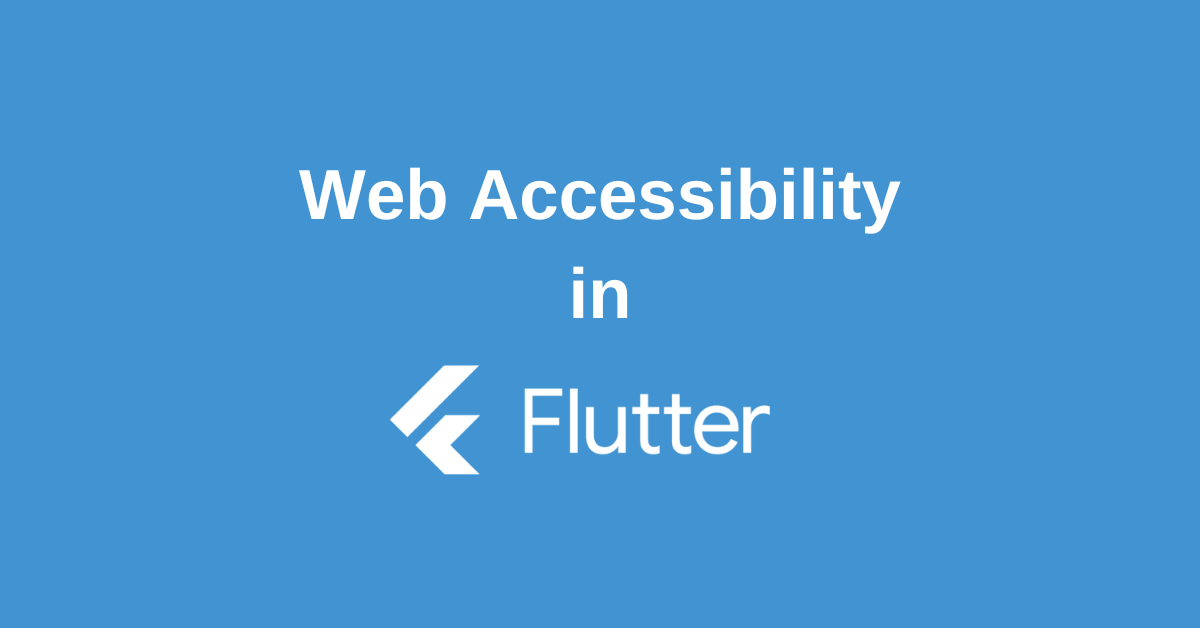In today’s digital world, creating accessible websites is not just a legal requirement but a moral imperative. Accessibility ensures that people with disabilities can navigate and interact with your website easily. Flutter, Google’s popular UI toolkit, enables developers to build natively compiled applications for mobile, web, and desktop from a single codebase. While Flutter is already well-known for mobile app development, its web capabilities are growing rapidly—including accessibility support. This article dives deep into Flutter Web Accessibility, exploring best practices, tools, and techniques to make Flutter web apps inclusive and user-friendly.
Why Flutter Web Accessibility Matters?
Accessibility means designing web content that everyone can use regardless of their abilities. According to the World Health Organization, over a billion people worldwide live with some form of disability. For websites, this means ensuring compatibility with screen readers, keyboard navigation, and visual aid technologies.
Flutter’s web platform is optimized for building dynamic single-page applications that look and feel native. However, accessibility on the web requires deliberate semantic structure and meaningful interaction patterns. By incorporating accessibility from the start, developers can create more inclusive applications, reach a wider audience, and comply with regulations like the ADA and WCAG standards.
Key Accessibility Features in Flutter Web
Flutter offers a suite of built-in accessibility features designed to enhance user experience across devices:
- Semantics Widget: This widget allows developers to add descriptive labels, roles, and hints to UI elements so screen readers can accurately convey their meaning and function. For example, wrapping a custom button with
Semantics(label: 'Submit')helps visually impaired users understand its purpose. - Roles and Descriptions: Flutter 3.32 introduced the
SemanticsRoleAPI for assigning semantic roles like buttons, headers, and statuses, improving how assistive technologies interpret widgets on the web. - Focus and Keyboard Navigation: For non-mouse users, Flutter supports focus traversal and keyboard accessibility. Developers can manage focus using
FocusNodeand ensure the logical navigation order is intuitive. - High Contrast and Scalable Fonts: Adhering to WCAG guidelines, Flutter encourages high contrast themes and dynamic text scaling to support users with low vision or color blindness.
Best Practices for Flutter Web Accessibility
Implementing accessibility in Flutter Web involves both leveraging built-in features and following development best practices:
1. Use Semantic Widgets
Flutter widgets are visually rich but not inherently web-semantic. Use the Semantics widget to annotate UI elements with meaningful labels and roles. Combine multiple related widgets using MergeSemantics for simpler screen reader output, and use ExcludeSemantics to hide irrelevant content from accessibility tools.
2. Ensure Keyboard Navigation
All interactive elements should be reachable and operable with a keyboard alone. Make use of FocusNode and provide clear focus indicators. Logical tab ordering can be controlled with OrdinalSortKey to provide a natural flow, enhancing usability for keyboard and assistive technology users.
3. Support Screen Readers
Test your app with popular screen readers on different platforms like TalkBack on Android and VoiceOver on iOS and desktop. Adding accessible labels and hints as well as proper widget roles will significantly improve the experience for users with visual impairments.
4. Maintain Adequate Contrast and Text Size
Use colors with sufficient contrast ratios (minimum 4.5:1 for normal text) and enable text scaling so users can adjust font sizes as needed. Flutter’s theme system supports high-contrast color schemes which are essential for readability.
5. Use Tools and Packages for Accessibility Testing
Leverage Flutter packages such as accessibility_tools for detecting and fixing accessibility issues during development. These tools scan UI elements and suggest improvements in real-time.
Overcoming SEO Challenges with Flutter Web
Flutter Web apps, being client-rendered, sometimes face SEO challenges due to lack of server-side semantics. However, developers can mitigate this by:
- Implementing server-side rendering (SSR) proxies like Prerender.io to deliver SEO-friendly HTML snapshots to crawlers.
- Using semantic HTML tags through web support tools to map Flutter widgets to SEO-relevant tags.
- Adding proper meta tags for titles, descriptions, and social sharing.
While SEO is not straightforward with Flutter Web, accessibility improvements often align with SEO best practices, encouraging semantic clarity and structured content.
Conclusion
Flutter Web Accessibility is an evolving but essential area for developers aiming to create inclusive digital experiences. By leveraging Flutter’s semantics, focus management, contrast settings, and testing tools, developers can build web apps that serve all users effectively—including those with disabilities. Additionally, addressing accessibility also boosts SEO and overall usability, driving greater reach and impact.
Creating accessible Flutter web applications is not just a technical task but a commitment to digital equity, ensuring that technology empowers every user. Embrace these best practices and Flutter’s accessibility features to build web apps that truly welcome everyone.

